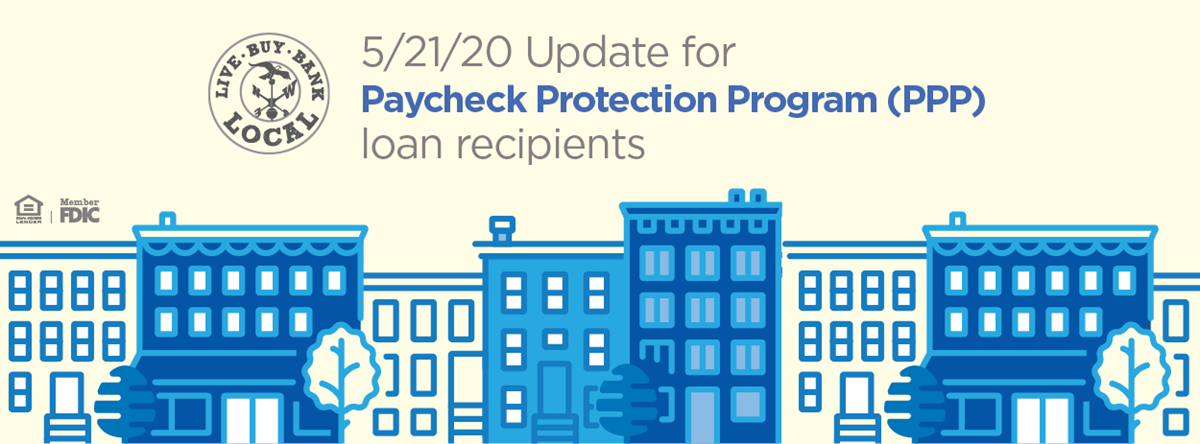Important news regarding PPP loan forgiveness…
Last Friday, the Small Business Administration (SBA) released the long-awaited Loan Forgiveness Application and Instructions for the Paycheck Protection Program (PPP).
Despite their attempt to create a simplified process, the application may seem a bit overwhelming at first glance. We encourage you to take your time and read through the application instructions and work with your accountant where possible. Most of the information and documentation requested should not be difficult to produce. The SBA built in a number of provisions to help PPP recipients maximize their loan forgiveness — which demonstrates their intention to honor the purpose of the program. A patient thorough approach will be the best way to complete the process.
We’d like to highlight a few items in the application and instructions.
Your 8-week spending period: The SBA defines the “Covered Period” as the 8 weeks beginning the day you receive your funding from the bank. Recognizing that the first payroll paid after receiving your funds may relate to a prior payroll period, the SBA has established an “Alternative Payroll Covered Period.” This period begins the first day of the next pay period following receipt of your PPP funds. For example, if you received your funds on Monday April 20 and your payroll on Friday April 24 included a prior payroll period, you may choose to use the first day of your next payroll period (i.e.; Sunday April 26) as the beginning of your 8-week spending period. We think this flexibility is a plus.
Eligible nonpayroll costs: These costs include interest on covered mortgages, plus rent and utilities payments. To be allowed in the forgiveness calculation, these costs must be paid during the covered 8-week period (the same as your payroll period) or incurred during the covered period and paid on or before the next regular billing date, even if that date is after your covered 8-week period. This flexibility is also a plus. The SBA makes it clear that prepaying any of these items is not allowed.
Potential reductions to debt forgiveness: Clearly, the most complex and potentially impactful component of the SBA’s Forgiveness Application is the calculation of an “FTE Reduction Quotient.” This is a required calculation that may reduce your debt forgiveness based on average Full-time Equivalents (FTEs) as compared to certain periods of time, or the reduction of salary or hourly wages during the covered 8-week period. Details are addressed in the SBA’s Instructions and should be read carefully. The good news is that the SBA provides “safe harbor” conditions that could offset a potential forgiveness reduction — including an option to increase staffing levels by June 30 (even if that date is after your covered 8-week spending period). Again, we recommend that you read this section carefully and work with your accountant; through proper planning, you still may be able to achieve full forgiveness.
Required documentation: The Instructions include a list of documentation that is required upon submission of your Forgiveness Application. The list does not appear to be overly burdensome.
Deadlines: Currently, the instructions do not provide any deadlines for submission of your Forgiveness Application. However, we encourage you to work with your accountant and track your spending now so you will be ready to submit your application as soon as possible after your covered 8-week spending period has ended. We’ll be in touch to let you know exactly how to submit as your date draws near.
- • •
While the Forgiveness Application and Instructions still have open questions and additional guidance is expected, as your local bank we are committed to keeping you up to date as information becomes available. We believe a good understanding of the process today may provide opportunities to ensure you maximize your loan forgiveness.
Stay tuned; we’ll be in touch again as soon as we learn any new information about the forgiveness process!
Sincerely,

Mark Bodin
President

Stephen Bianco
Senior Vice President/ Senior Lender
